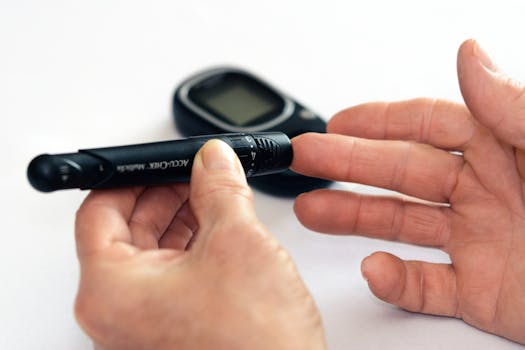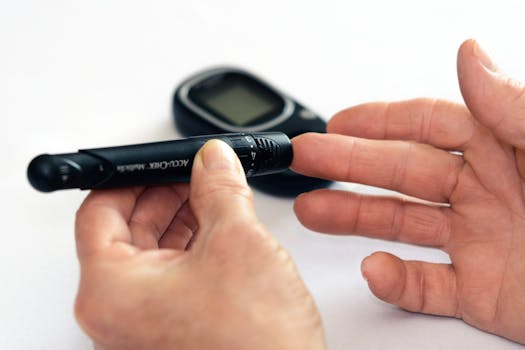Managing blood sugar becomes more about balance than strict numbers as we age. For many people, understanding realistic, individualized targets helps prevent both long-term complications and dangerous short-term problems like hypoglycemia. This article explains typical ranges and practical steps to reach safe, evidence-based goals — including what to discuss with your clinician and how to spot problems using tools such as a low blood sugar reading chart.
A1C goals at age 70 and older: recommended target ranges
Clinicians increasingly tailor targets to a person’s overall health, life expectancy, and risk of low blood sugar. For older adults, especially those with multiple medical conditions or limited mobility, the focus shifts from strict glycemic control to avoiding hypoglycemia and preserving quality of life. Typical categories used by diabetes organizations include:
- Healthy older adults with few coexisting conditions: A1C near 7.0–7.5% may be appropriate.
- Those with multiple chronic illnesses or mild cognitive impairment: a target closer to 7.5–8.0%.
- Frail seniors, limited life expectancy, or recurrent severe hypoglycemia: relaxed targets such as 8.0–8.5% to minimize low blood sugar risk.
These ranges reflect the balance between preventing complications and avoiding treatment-related harm. If you want an in-depth primer on types of diabetes and treatment options, see descriptive anchor text.
Why targets change with age
Older adults are at higher risk for hypoglycemia, drug interactions, and functional decline. Tight control that might be safe for a younger person can increase falls, confusion, or hospitalization in a senior. Conversely, very high A1C values also raise long-term risks. That’s why clinicians use a nuanced approach, weighing benefits and harms and discussing patient priorities before setting a goal.
How to safely reach and maintain targets
- Medication review: Ask your clinician or pharmacist to simplify regimens when possible and choose medications with lower hypoglycemia risk. Dose adjustments may be needed as kidney function changes.
- Consistent meals and carbohydrate awareness: Eating balanced meals at regular intervals reduces blood sugar swings. Learning basic carb counting or following simple portion guidance can help.
- Physical activity tailored to ability: Gentle aerobic exercise, strength training, and balance work help insulin sensitivity and mobility. Always check with a provider before starting new routines.
- Monitoring and pattern recognition: Regular fingerstick checks or continuous glucose monitoring (if appropriate) reveal trends. Use a low blood sugar reading chart to recognize when glucose is dangerously low and learn the steps to treat it promptly.
- Preventive care and self-management support: Vaccinations, foot and eye exams, and caregiver education reduce complications and support safe daily management.
Practical tips to avoid hypoglycemia
Hypoglycemia symptoms can be subtle in older adults (confusion, dizziness, or weakness rather than classic sweating and shaking). Keep quick sources of glucose accessible, teach caregivers how to use a glucose gel or juice, and ensure regular meal timing. If hypoglycemia occurs frequently, re-evaluate A1C targets and medication choices with a healthcare professional.
Resources and when to seek help
Trusted public health sources offer clear guidance on managing diabetes and preventing complications. For evidence-based strategies on daily management, medication choices, and when to seek urgent care, refer to official guidance such as the CDC’s recommendations on managing diabetes and preventive care: CDC guidance on managing diabetes. If blood sugars are unstable, or if there are symptoms of severe hypo- or hyperglycemia, contact a clinician promptly.
Normal a1c levels for seniors: what “normal” means
The phrase “normal a1c levels for seniors” can be misleading because “normal” depends on health context. For many older adults, a modestly higher A1C compared with younger adults is acceptable and safer. Individualization—based on functional status, comorbidities, and personal preferences—is the guiding principle.
- Takeaways:
- Discuss individualized A1C goals with your provider — targets vary by health status and risk of hypoglycemia.
- Prioritize avoiding severe low blood sugar; use a low blood sugar reading chart and clear action plans.
- Medication review, consistent meals, and tailored activity are effective ways to achieve targets safely.
- Use trusted resources and involve caregivers when needed to support daily management.
Q: How often should an older adult check their A1C?
A1C is commonly checked every 3 months when therapy or control is changing, and every 6 months once stable. Frequency may be adjusted based on treatment changes, recent hypoglycemia, or worsening symptoms.
Q: Can A1C targets change over time?
Yes. Targets should be revisited periodically, especially after new diagnoses, changes in medications, functional decline, or hospitalization. Shared decision-making with your clinician helps keep goals aligned with your health and priorities.
Q: What should I do if I have frequent low readings?
Document the timing, symptoms, and any potential triggers, then contact your healthcare team. They may simplify medications, adjust doses, or recommend diet and timing changes to reduce hypoglycemia risk.






